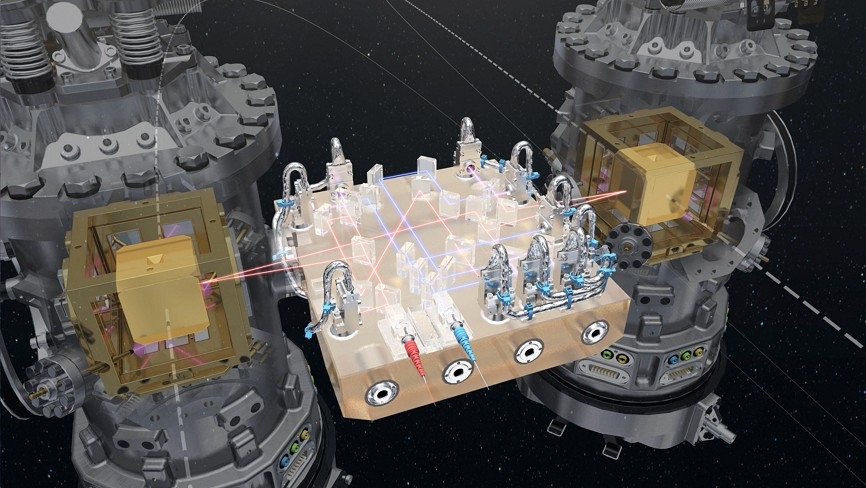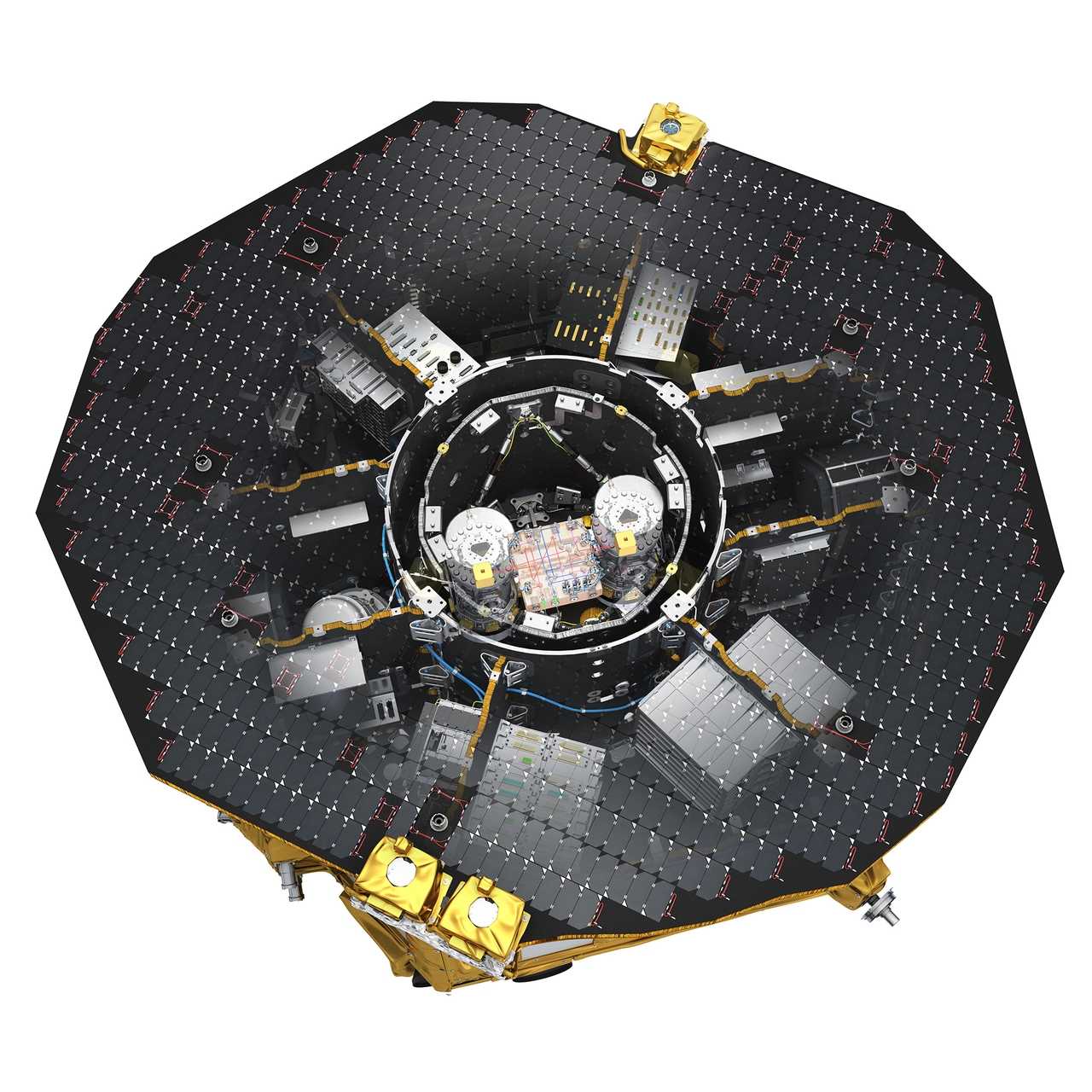LISA Pathfinder placed these test masses in the most precise freefall ever obtained to demonstrate technologies for observing gravitational waves from space. Launched on 3 December, LISA Pathfinder reached its operational location on 22 January, some 1.5 million km from Earth in the direction of the Sun.
As tests on the spacecraft and its precious payload continue, a major milestone was reached today. For the first time, the two masses – a pair of identical 46 mm gold–platinum cubes – in the heart of the spacecraft are floating freely, several millimetres from the walls of their housings. The cubes sit 38 cm apart linked only by laser beams.
Throughout LISA Pathfinder’s ground handling, launch, the burns that raised its orbit, and the six-week cruise to its work site, each cube was held firmly in place by eight "fingers" pressing on its corners.
Test masses inside LISA Pathfinder payload
© ESA/ATG medialab
On 3 February, the locking fingers were retracted and a valve was opened to allow any residual gas molecules around the cubes to vent to space. Each cube remained in the centre of its housing held by a pair of rods softly pushing on two opposite sides. The rods were finally released from one test mass yesterday and from the other today, leaving the cubes floating freely, with no mechanical contact with the spacecraft.
It will be another week before the cubes are left completely at the mercy of gravity, with no other forces acting on them.
On 23 February, the team will switch LISA Pathfinder to science mode for the first time. Then the scientists will be in a position to run several months of experiments to determine how accurately the two freely-flying test masses can be kept positioned relative to each other, making measurements with the laser that links them.
Roughly speaking, the required accuracy is on the order of a millionth of a millionth of a metre.
After final checks, LISA Pathfinder will begin its science mission on 1 March, validating a key technology for observing gravitational waves from space.
In the coming months, LISA Pathfinder will verify the fundamental conditions needed for a future gravitational wave observatory in space: putting test masses into freefall at unprecedented levels of accuracy, by isolating the two cubes from all external and internal forces except one: gravity.
Source

